Saharan Dust Transport during the Incipient Growth Phase of African Easterly Waves
Abstract
:1. Introduction
2. Eddy Dust Transports: Theoretical Framework
2.1. Governing Equations
2.2. Analytical Analysis
3. Eddy Dust Transports: Numerical Results
3.1. WRF-Dust Model
3.2. Background Fields
3.3. Dust Transports
4. Discussion and Conclusions
Author Contributions
Funding
Acknowledgments
Conflicts of Interest
References
- Schepanski, K.; Tegen, I.; Macke, A. Saharan dust transport and deposition towards the tropical northern Atlantic. Atmos. Chem. Phys. 2009, 9, 1173–1189. [Google Scholar] [CrossRef] [Green Version]
- Knippertz, P.; Todd, M.C. The central west Saharan dust hot spot and its relation to African easterly waves and extratropical disturbances. J. Geophys. Res. Atmos. 2010, 115, D12117. [Google Scholar] [CrossRef]
- Miller, R.L.; Tegen, I. Climate response to soil dust aerosols. J. Clim. 1998, 11, 3247–3267. [Google Scholar] [CrossRef]
- Schepanski, K. Transport of mineral dust and its impact on climate. Geosciences 2018, 8, 151. [Google Scholar] [CrossRef]
- Thorncroft, C.D.; Blackburn, M. Maintenance of the African easterly jet. Q. J. R. Meteor. Soc. 1999, 125, 763–786. [Google Scholar] [CrossRef]
- Dezfuli, A.K.; Nicholson, S.E. A note on long-term variations of the African easterly jet. Int. J. Climatol. 2011, 31, 2049–2054. [Google Scholar] [CrossRef]
- Burpee, R.W. The origin and structure of easterly waves in the lower troposphere of North Africa. J. Atmos. Sci. 1972, 29, 77–90. [Google Scholar] [CrossRef]
- Thorncroft, C.D.; Hoskins, B.J. An idelaized study of African easterly waves. I: A linear view. Q. J. R. Meteorol Soc. 1994, 120, 953–982. [Google Scholar] [CrossRef]
- Thorncroft, C.D.; Hodges, K. African easterly wave variability and its relationship to Atlantic tropical cyclone activity. J. Clim. 2001, 14, 1166–1179. [Google Scholar] [CrossRef]
- Hsieh, J.S.; Cook, K.H. A study of the energetics of African easterly waves using a regional climate model. J. Atmos. Sci. 2007, 64, 421–440. [Google Scholar] [CrossRef]
- Ross, R.; Krishnamurti, T.N. Low-level African easterly wave activity and its relation to Atlantic tropical cyclogenesis in 2001. Mon. Weather Rev. 2007, 135, 3950–3964. [Google Scholar] [CrossRef]
- Reed, R.J.; Klinker, E.; Hollingsworth, A. The structure and characteristics of African easterly wave disturbances as determined from the ECMWF Operational Analysis/Forecast System. Meteorol. Atmos. Phys. 1988, 38, 22–33. [Google Scholar] [CrossRef]
- Pytharoulis, I.; Thorncroft, C. The low-level structure of African easterly waves in 1995. Mon. Weather Rev. 1999, 127, 2266–2280. [Google Scholar] [CrossRef]
- Engelstaedter, S.; Washington, R. Atmospheric controls on the annual cycle of North African dust. J. Geophys. Res. Atmos. 2007, 112, D03103. [Google Scholar] [CrossRef]
- Knippertz, P.; Todd, M.C. Mineral Dust aerosols over the Sahara: Meteorological controls on emission and transport and Implication for modeling. Rev. Geophys. 2012, 50, RG1007/2012. [Google Scholar]
- Nenes, A.; Murray, B.; Bougiatioti, A. Mineral dust and its microphysical interactions with clouds. In Mineral Dust: A Key Player in the Earth System; Knippertz, P., Stuut, J.-B.W., Eds.; Springer: New York, NY, USA, 2014; pp. 287–325. [Google Scholar]
- Carlson, T.N.; Benjamin, S.G. Radiative heating rates for Saharan dust. J. Atmos. Sci. 1980, 37, 193–213. [Google Scholar] [CrossRef]
- Zhu, A.; Ramanathan, V.; Li, F.; Kim, D. Dust plumes over the Pacific, Indian, and Atlantic oceans: Climatology and radiative impact. J. Geophys. Res. Atmos. 2007, 112. [Google Scholar] [CrossRef]
- Tompkins, A.M.; Cardinali, C.; Morcette, J.J.; Rodwell, M. Influence of aerosol climatology on forecasts of the African Easterly jet. Geophys. Res. Lett. 2005, 32, L10801. [Google Scholar] [CrossRef]
- Wilcox, E.M.; Lau, K.M.; Kim, K.M. A northward shift of the North Atlantic Ocean intertropical convergence zone in response to summertime Saharan dust outbreaks. Geophys. Res. Lett. 2010, 37, L04804. [Google Scholar] [CrossRef]
- Chen, S.-H.; Wang, S.-H.; Waylonis, M. Modification of Saharan air layer and environmental shear over the eastern Atlantic Ocean by dust-radiation effects. J. Geophys. Res. Atmos. 2010, 115, D21202. [Google Scholar] [CrossRef]
- Reale, O.; Lau, W.K.; Silva, A. Impact of interactive aerosol on the African easterly jet in the NASA GEOS-5 global forecasting system. Wea. Forecast. 2011, 26, 504–519. [Google Scholar] [CrossRef]
- Lavaysse, C.; Chaboureau, J.-P.; Flamant, C. Dust impact on the West African heat low in summertime. Q. J. R. Meteorol. Soc. 2011, 137, 1227–1240. [Google Scholar] [CrossRef]
- Bercos-Hickey, E.; Nathan, T.R.; Chen, S.-H. Saharan dust and the African esterly jet-African easterly wave system. Q. J. R. Meteorol. Soc. 2017, 143, 2797–2808. [Google Scholar] [CrossRef]
- Ma, P.L.; Zhang, K.; Shi, J.J.; Matsui, T.; Arking, A. Direct radiative effect of mineral dust on the development of African easterly waves. J. Appl. Met. Clim. 2012, 51, 2090–2104. [Google Scholar] [CrossRef]
- Grogan, D.F.P.; Nathan, T.R.; Chen, S.-H. Effects of Saharan dust on the linear dynamics of African Easterly Waves. J. Atmos. Sci. 2016, 73, 891–911. [Google Scholar] [CrossRef]
- Grogan, D.F.P.; Nathan, T.R.; Chen, S.-H. Saharan dust and the nonlinear evolution of the African easterly jet–African easterly wave system. J. Atmos. Sci. 2017, 74, 27–47. [Google Scholar] [CrossRef]
- Nathan, T.R.; Gorgan, D.F.P.; Chen, S.-H. Subcritical destabilization of African easterly waves by Saharan mineral dust. J. Atmos. Sci. 2017, 74, 1039–1055. [Google Scholar] [CrossRef]
- Xie, Y.; Zhang, Y.; Xiong, X.; Qu, J.J.; Che, H. Validation of MODIS aerosol optical depth product over China using CARSNET measurements. Atm. Env. 2011, 45, 5970–5978. [Google Scholar] [CrossRef]
- Jones, C.; Mahowald, N.; Luo, C. The role of eaaterly waves on African desert dust transport. J. Clim. 2003, 16, 3617–3628. [Google Scholar] [CrossRef]
- Kaufman, Y.J.; Koren, I.; Rener, L.A.; Tanre, D.; Ginoux, P.; Fan, S. Dust transport and deposition observed from the Terra-Moderate resolution imaging spectroradiometer (MODIS) spacecraft over the Atlantic Ocean. J. Geophys. Res. Atmos. 2005, 110, D10S12. [Google Scholar] [CrossRef]
- Prospero, J.M.; Lamb, P.J. African droughts and dust transport to the Caribbean: Climate change implications. Science 2003, 302, 1024–1027. [Google Scholar] [CrossRef]
- Grogan, D.F.P.; Thorncroft, C.D. The characteristics of African easterly waves coupled to Saharan mineral dust aerosols. Q. J. R. Meteorol. Soc. 2019, 145, 1130–1146. [Google Scholar] [CrossRef]
- Shao, Y. Physics and Modeling of Wind Erosion; Springer Science & Business Media: Berlin, Germany, 2008. [Google Scholar]
- Chen, S.-H.; Liu, Y.-C.; Nathan, T.R.; Davis, C.; Torn, R.; Sowa, N.; Cheng, C.-T.; Chen, J.-P. Modeling the effects of dust-radiative forcing on the movement of Hurricane Helene (2006). Q. J. R. Meteorol. Soc. 2015, 141, 2563–2570. [Google Scholar] [CrossRef]
- Hess, M.; Kopke, P.; Schult, I. Optical properties of aerosols and clouds: The software package OPAC. Bull. Am. Meteorol. Soc. 1998, 79, 831–844. [Google Scholar] [CrossRef]
- Yu, H.; Chin, M.; Winker, D.M.; Omar, A.H.; Liu, Z.; Kitaka, C.; Diehl, T. Global view of aerosol vertical distributions from CALIPSO lidar measurements and GOCART simulations: Regional and seasonal variations. J. Geophys. Res. Atmos. 2010, 115, D00H30. [Google Scholar] [CrossRef]
- Holton, J.R.; Hakim, G.J. An Inroduction to Dynamic Meterorology; Academic Press: Waltham, MA, USA, 2013. [Google Scholar]

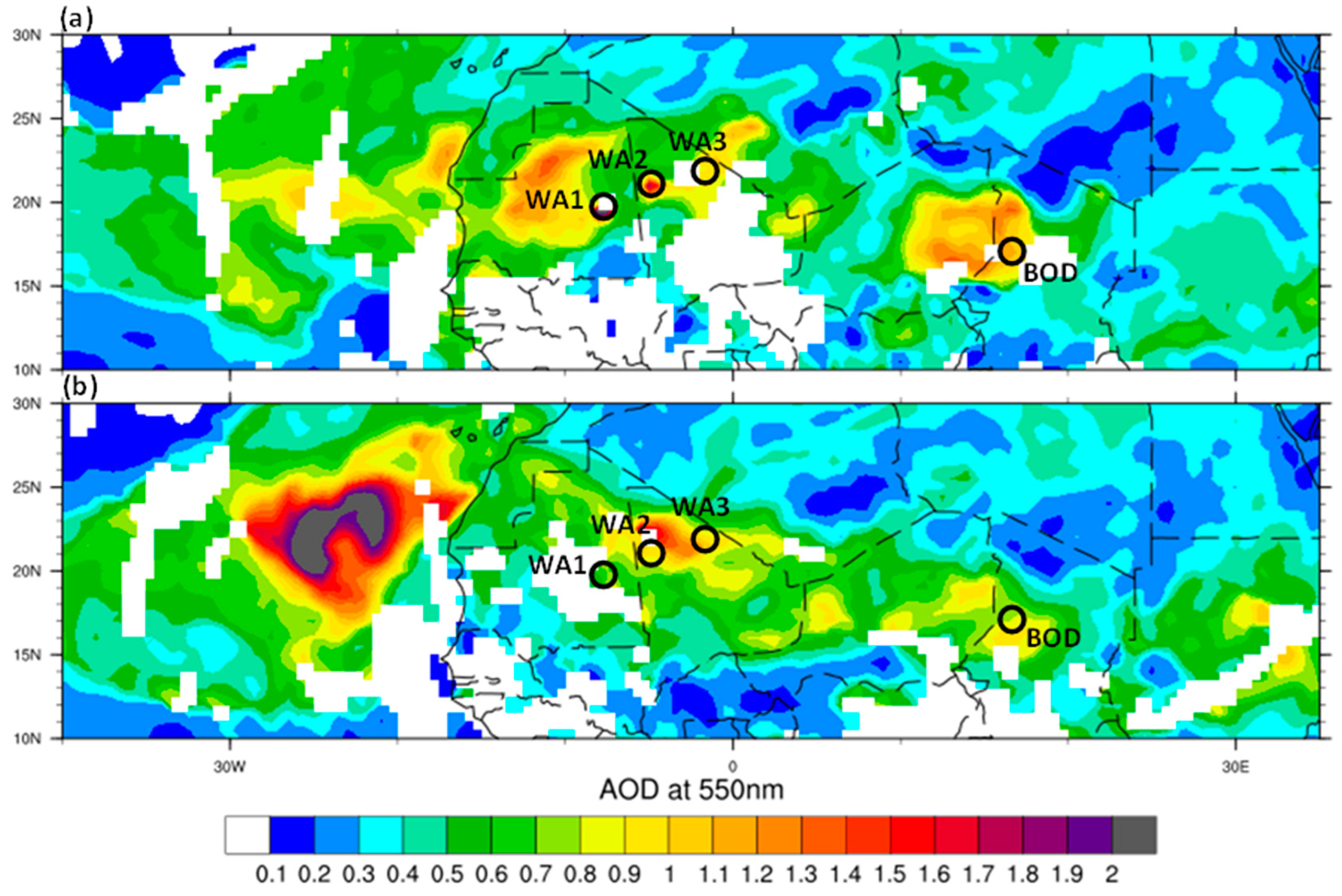
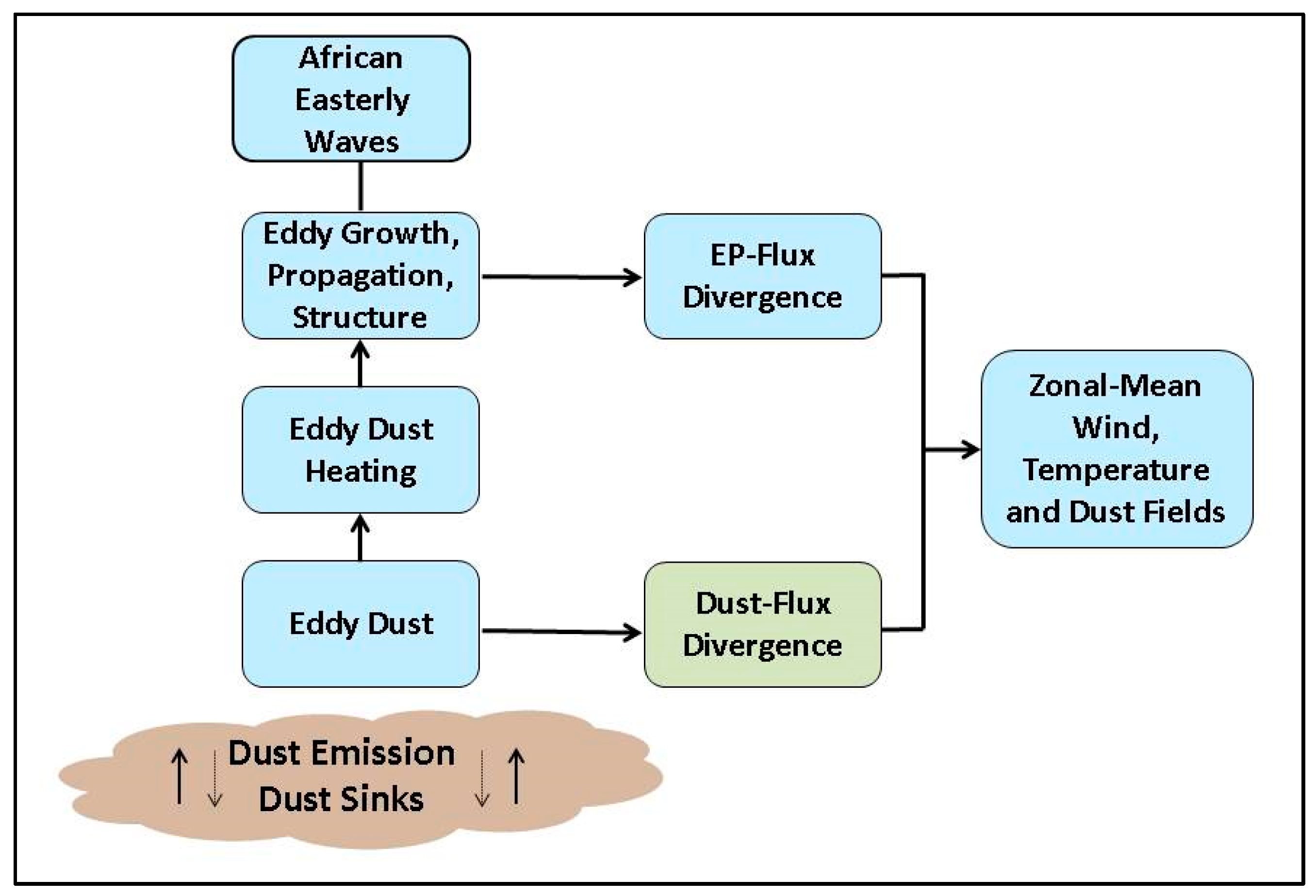
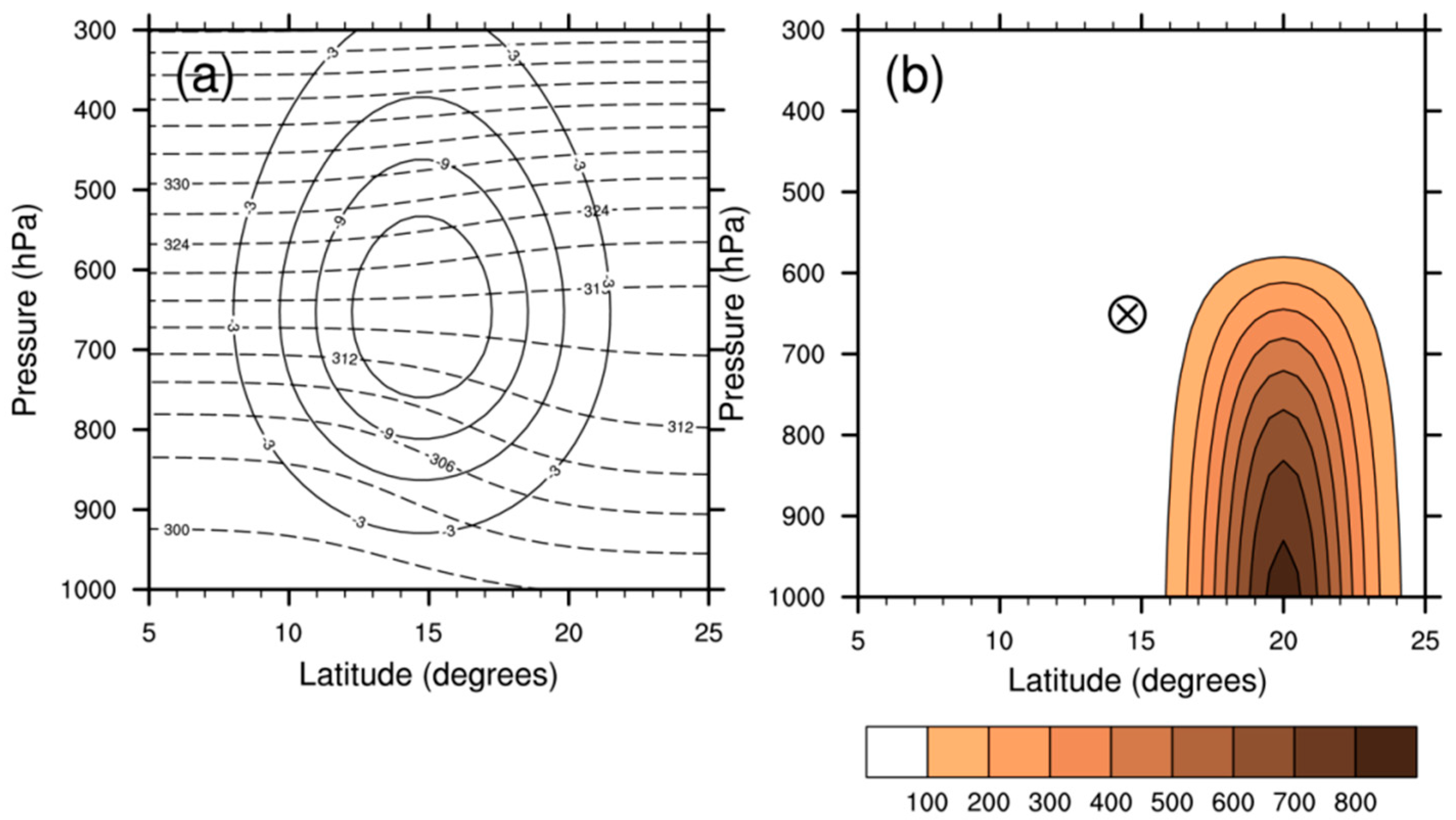
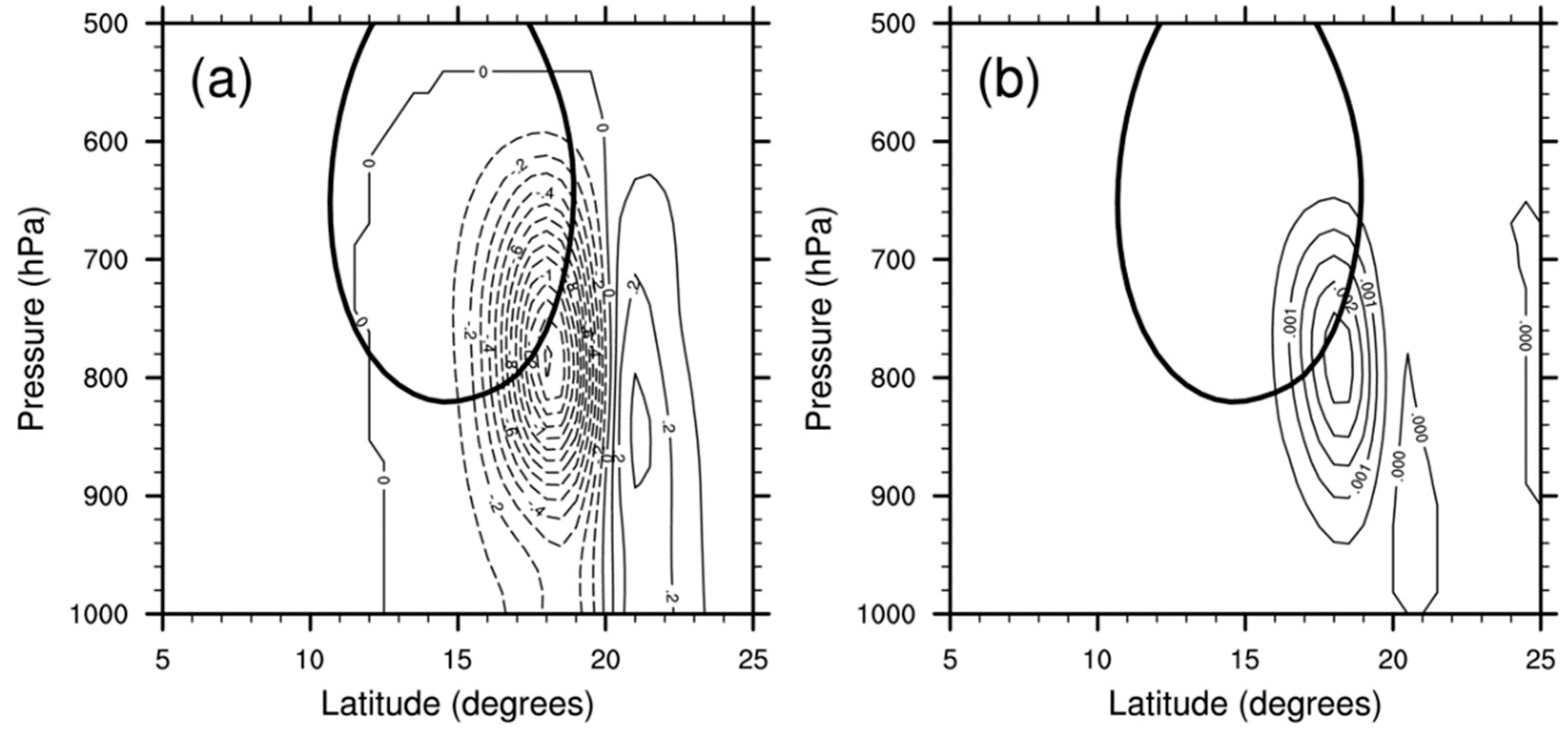
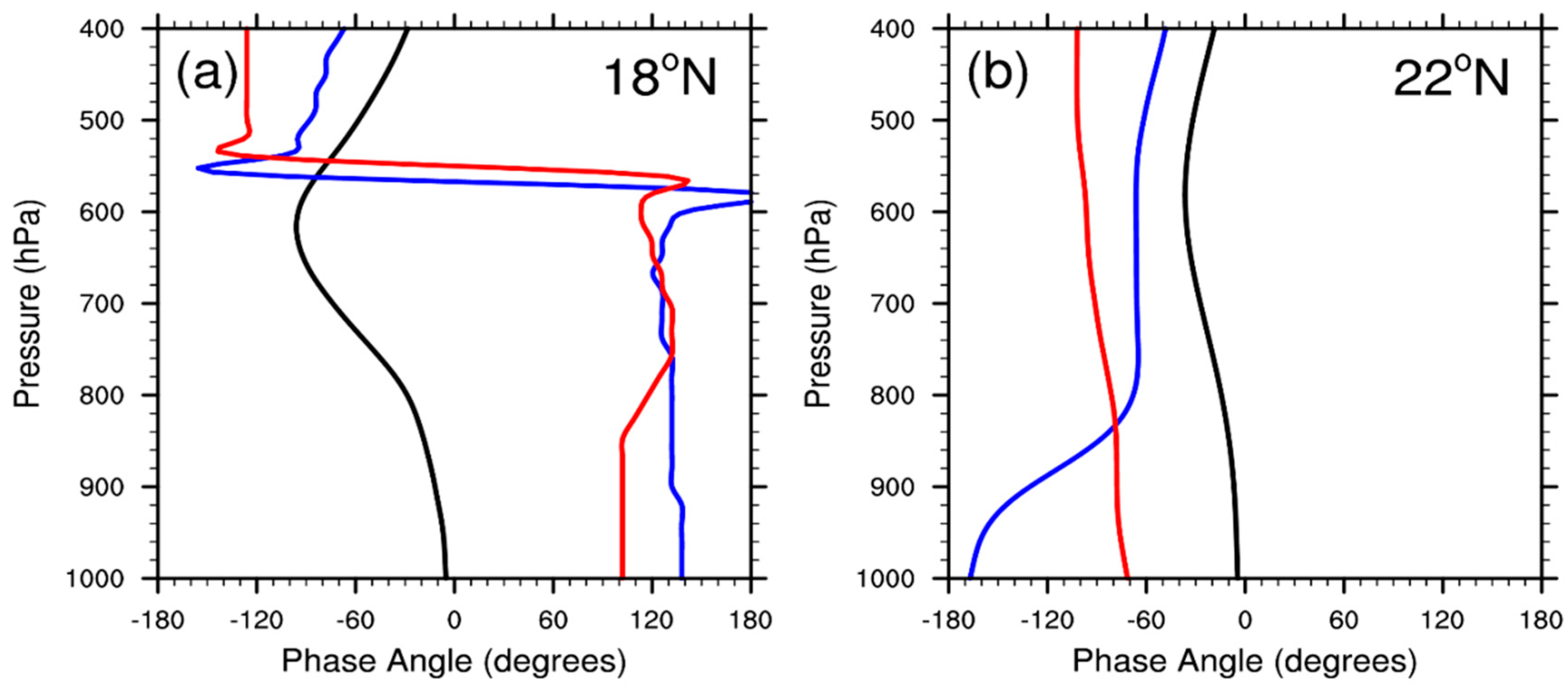
© 2019 by the authors. Licensee MDPI, Basel, Switzerland. This article is an open access article distributed under the terms and conditions of the Creative Commons Attribution (CC BY) license (http://creativecommons.org/licenses/by/4.0/).
Share and Cite
Nathan, T.R.; Grogan, D.F.P.; Chen, S.-H. Saharan Dust Transport during the Incipient Growth Phase of African Easterly Waves. Geosciences 2019, 9, 388. https://doi.org/10.3390/geosciences9090388
Nathan TR, Grogan DFP, Chen S-H. Saharan Dust Transport during the Incipient Growth Phase of African Easterly Waves. Geosciences. 2019; 9(9):388. https://doi.org/10.3390/geosciences9090388
Chicago/Turabian StyleNathan, Terrence R., Dustin F. P. Grogan, and Shu-Hua Chen. 2019. "Saharan Dust Transport during the Incipient Growth Phase of African Easterly Waves" Geosciences 9, no. 9: 388. https://doi.org/10.3390/geosciences9090388



